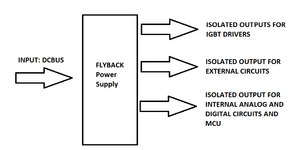seyyah
Advanced Member level 2
I used to use some kind of voltage sensor to make the isolated measurement of the voltage in a 3 phase inverter system. I've inspected several ac motor drives and I did not see any special IC like isolated amplifier or some sensor or a similar thing. I need to measure the DcBus and motor phase voltage. And they also do. How can they achieve this? Any ideas?

